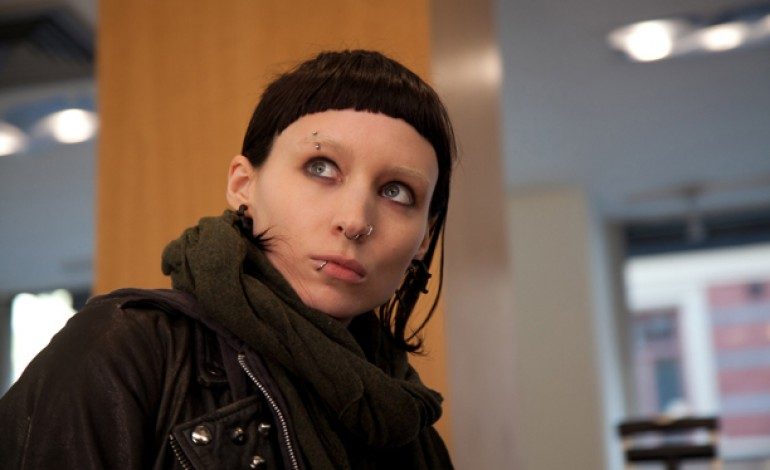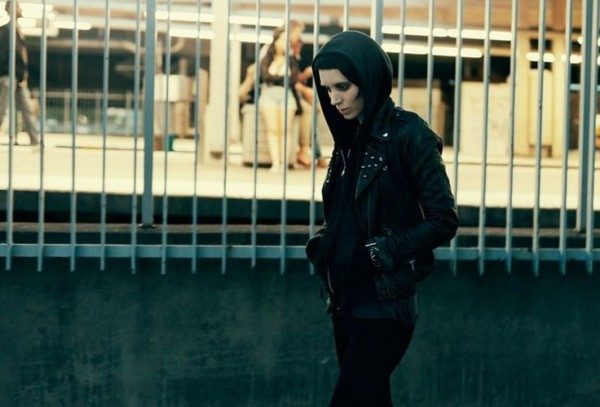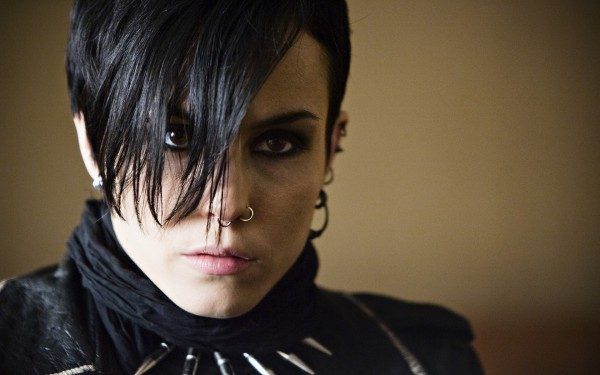

Sadly, it’s a well-known fact that strong female characters, whether they be damaged heroines or mighty crime fighters, are few and far between in Hollywood. But there is one that somehow became an international phenomenon overnight, even though her personality and appearance are the types that would seemingly turn most people away, not wanting to think about or acknowledge her existence if seen on the street. Lisbeth Salander, having originally appeared in the bestselling Swedish book series the Millennium Trilogy, but is most popular for the first entry, The Girl with the Dragon Tattoo.
Since its release its been adapted into three Swedish films as well as a 2011 American remake directed by David Fincher (The Social Network, Gone Girl). And though these stories tell a darkly compelling mystery filled with serial murder, human trafficking, and government and business corruption, they’re not the reason why this series is so beloved by millions. Simply, it’s her. Salander is a punk computer hacker, smarter than anyone she comes across, willing to do anything and everything to expose the truth. But she doesn’t really look it. She’s very, very petite, wears unattractive, dark clothing that lets her stay unnoticed and has been a ward of the state ever since she was a child. In a Cinema Blend interview with Rooney Mara, who played Salander in Fincher’s version, stated a few thoughts on the fascinating duality of the character’s appearance:
Yeah, she’s meant to look like a little 14-year-old boy. Her look to us was always meant to repel. It’s always meant to be a means to get the kind of response that I got, people don’t pay attention to you, they don’t have expectations of you, they just ignore you. We certainly didn’t want her to be sexy or attractive in any way. I think by the end of the film she is beautiful.
Yet we root for her, we love her unconditionally, even if she becomes extremely violent. But she does have plenty of reasons for being that way. Within the first quarter of the first film, her cherished legal guardian becomes ill and she’s forced to obtain a new one. Soon after she does, the man sees her criminal past, her seemingly carefree demeanor, and a minor presence that just screams powerlessness when up against society and, most importantly, men. Salander is raped brutally by the new guardian, and that’s where we first see her fiery internal rage that she has hidden underneath. Most would expect her to go to the police, but she can’t; she’s known for her misbehavior. Others may think her to simply press on and live with this horrific event. Nope. Not her. Not Lisbeth. She gets her revenge. She goes back to his apartment and essentially does the same thing to him as he did to her.
So, wait. That type of act from a character isn’t what many would cling on to. Except in her case, we do. Salander could be seen as a strong feminist go-getter. But she’s really not that, at heart. She does what she wants to do, not what she should. She fights men because they’ve abused her. She fights society because its crippled her stature in the world. And she finds the real truth because that’s what she loves to do, and is incredibly skilled at it. So she’s a very strong female character, but she’s in almost no way a feminist, which seems the reason for why many people see her so as progressive part of literature and media.
And in both the Swedish and American versions, that hidden message is definitely visible, just maybe not at first glance. Fincher is known for his dark, brooding, and amazingly intelligent films, and this is by far one of his best. It tells a complex tale of a decades-old mystery that has left a rich businessman lost ever since its inception. He hires a disgraced journalist, Mikael Blomkvist (Daniel Craig), to solve the case. Along the way, Salander comes into the picture and the two end up working together. And again, there’s something special about this partnership that reveals more of her spellbinding personality. He is one of the only people who treats her as an equal, an adult, but also as a human being, which are things that have been absent from most of her encounters with men. The original Swedish title of the first book is blatantly Men Who Hate Women. And that’s exactly what most men think of Salander – a nobody, a delinquent, an unlikable and weak-minded girl. They couldn’t be more wrong.
Blomkvist and Salander do have the occasional sexual encounter during the series, but it’s not in any way romantic, as many partnerships are within this genre. Salander never really flaunts her sexuality, even if she is originally-written as being beautiful. She only opens up to Blomkvist, and him alone, and sex is just a supporting part of their relationship, but it’s really one built up on respect and trust. In Fincher’s film, the two characters briefly reveal how they feel; Salander: “I like working with you,” and then Blomkvist: “I like working with you, too.” And that’s it. Romance isn’t apart of Salander except for when she’s found someone like him, of which she never has before in the past. The relationship feels incredibly genuine and complex, which is strange because they are such different people in almost every way.
Unfortunately, Salander’s future is lost at sea at the moment. While the 2011 film was profitable, it didn’t blow the box office out of the water, and it didn’t convince Sony that immediate sequels were necessary. Hopefully there will be another reiteration of the books sometime soon. It’s unclear if Mara will return, but she as well as the brilliant actress who played the dragon girl in the Swedish trilogy, Noomi Rapace, have both marked their righteous place in this series. And no matter the outcome, what author Stieg Larson created is something so incredible, mesmerizing, and utterly distinctive, that Salander sits unparalleled to anyone of her kind (of which there are none).
She lives in such a fearless and courageous way that anyone, male or female, brave or shy, kind or cold, can connect with, or at least admire, the punk girl with a ferocious dragon tattoo blazoned across her back.



